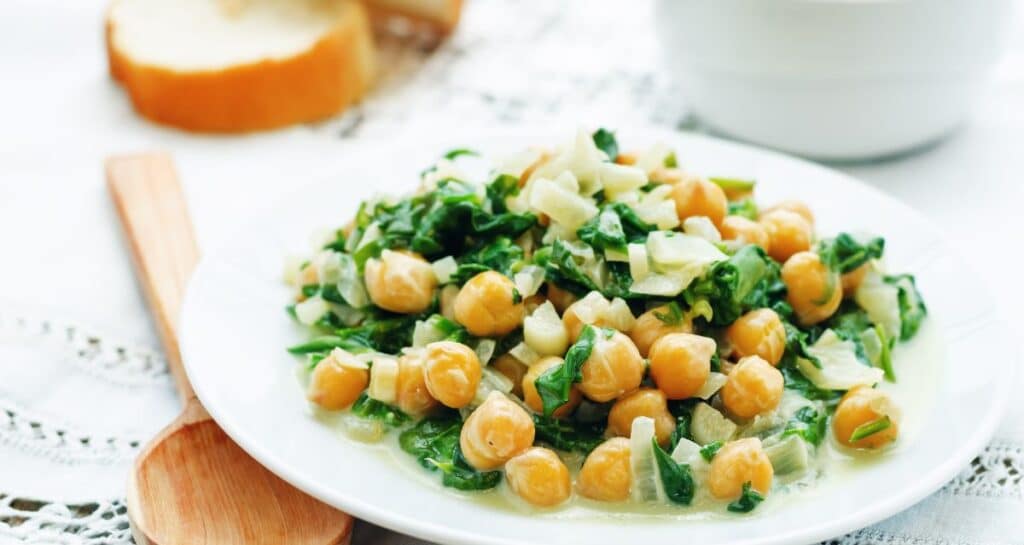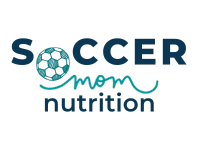Balanced Athlete Meals: The Foundation of Athlete Nutrition
Balanced athlete meals are the cornerstone of sports performance nutrition. They provide the necessary nutrients of an athlete meal plan to support performance, recovery and overall health.
We break down athlete meals into simple and understandable concepts so that you can create your own healthy athlete meals. Learn how to build balanced athlete meals in our blog post below.
Additionally we’ll share some recommendations for each meal of the day to inspire you to find what works best for you.
Read on to dive into the art of creating a balanced athlete meals.

Please note that this article contains affiliate links. If you click one of these links and make a purchase, we may earn a commission. As an Amazon Associate, we earn from qualifying purchases.
Athlete meals key nutrients
Athlete meals can be broken down into simple components, carbohydrates, protein, healthy fats and color (fruits and vegetables).
When combined in a balanced athlete meal, these nutrients ensure you are meeting their energy needs, supporting performance and recovery and getting key vitamins and minerals to support your well being.
Carbohydrates
Carbs should make up the largest portion of your meal, roughly 45-65% of your total caloric intake, since carbohydrates are your main energy source.
Additionally, the fiber in carbohydrates supports gut health, a healthy microbiome, \ and keeps you feeling fuller longer.
Choose complex carbohydrates like whole grains, fruits and starchy vegetables for sustained energy.
Protein
Athletes need a moderate amount of protein, around 15-25% of total calories, to support muscle repair and growth. Protein is also building blocks of bone, skin, hair and other tissues in the body.
Lean protein sources like chicken, fish, tofu, beans and dairy (or plant-based alternatives) support muscle repair and growth.
Healthy fats
Healthy fats should account for about 20-35% of your total calories. Fat also supports other functions in the body absorption of fat soluble vitamins and production of hormones.
Opt for sources like avocados, nuts, seeds and olive oil. They provide satiety, slow digestion support overall health and can also be a source energy for low level activity and during endurance activity when glycogen is depleted.
Color-vegetables and fruit
Colorful fruits and veggies are packed with essential vitamins, minerals and antioxidants that aid recovery, have anti inflammatory benefits and boost immune function. Fruits and starchy vegetables are also good carbohydrate sources.
Non starchy vegetables have soluble and insoluble fiber to support a healthy gut. It’s best to eat a variety of fruits and vegetables to maximize the benefits they offer.
Water
Another key nutrient for a balanced athlete meal is water for hydration. Water is essential for hydration, which affects every aspect of your health and performance.
Hydration is important because it helps to: maintain blood volume and blood pressure, regulate body temperature and prevent overheating and lubricate your joints.
The best sources of fluids for athletes are water and sports drinks. Water is the most natural and cheapest way to hydrate yourself.
Sports drinks are useful for longer and more intense workouts, as they provide carbohydrates, electrolytes and flavor, which can help you replenish your energy, fluid, and electrolyte balance, and encourage you to drink more.
You can also eat foods with high water content, drink milk or smoothies as part of your hydration plan.

Performance plate visual guide to athlete meals
The performance plate is a helpful visual tool for athletes to build balanced athlete meals. It simplifies the process of creating balanced meals by dividing your plate into sections and helps you match your energy and nutrient needs with your physical activity.
The more instense your physical activity, the more carbohydrates you need for energy to fuel your muscles and brain.
The less demanding your physical activity, the fewer carbohydrates you need and you can incorporate more vegetables and fruits.
Protein is a key nutrient for every plate, as it helps you build and repair your muscles, among other important body functions. You can maximize protein’s muscle building benefits by eating a consistent amount at each meal.
There are three types of plates that you can use depending on your training or competition schedule: easy, moderate and hard/race. Our post on the performance plate method goes into more detail.
Performance plate nutrient breakdowns
The performance plate portions are broken out into complex carbohydrates, protein, color and healthy fats. Depending on the activity level, you’ll need to adjust how your plate looks.
Complex carbohydrates (25-50% of performance plate)
Dedicate this section of the performance plate to complex carbohydrates. Whole grains like brown rice, quinoa or whole wheat pasta are excellent choices. They provide the energy needed for optimal performance.
Protein (25% of performance plate)
Reserve this section of your plate for lean protein sources. This could be grilled chicken, fish, tofu, tempeh or legumes for plant-based options.
Color-vegetables and fruits (25-50% of performance plate)
Fill this section with a variety of colorful vegetables and fruits. These provide essential vitamins, minerals and antioxidants while adding vibrant flavors to your meals.
Healthy fats (on the side)
While not represented on the plate visually, remember to incorporate healthy fats in moderation. This could be in the form of a drizzle of olive oil on your vegetables, handful of nuts on your salad, avocado added to your wrap or nut butter on a sandwich.

Building performance plate athlete meals
Now, let’s combine the concept of the performance plate with athlete-specific meal plan recommendations. For each meal we’ll give you ideas for foods to use and then examples of how to combine them for a balanced athlete meal.
Remember, these recommendations are flexible and can be adjusted based on individual energy needs based on intensity and duration of activity.
The key is to maintain a balance of carbohydrates, protein, healthy fats and colorful fruits and vegetables to support your athletic performance and overall well-being.
Breakfast performance plate
Since breakfast is essential for athletes, we’ve made recommendations for the building blocks for athlete breakfast meals.
Additionally check out our blog posts with another 25 breakfast ideas for athletes, high fiber breakfast, high carb breakfasts and breakfast ideas for teens.
Breakfast performance plate building blocks
Complex carbohydrates for breakfast
Whole-grain breads, bagels or tortillas, oatmeal, overnight chia pudding and quick breads and muffins, whole grain pancakes and waffles and beans.
Lean proteins at breakfast
Scrambled eggs or tofu, low fat Greek yogurt, lean chicken or turkey breakfast sausage, plant based sausage, high protein milk, cheese, smoked salmon and beans.
Colorful veggies and fruits for breakfast
Berries, sliced apples, fruit salad, dried tart cherries or cranberries, russet potatoes, sweet potatoes, spintach and kale, tomatoes (salsa) and sautéed mushroom.
Healthy fats for breakfast
Nuts and nut butters, avocado, olives, chia and flax seeds.
Breakfast athlete meal ideas
1. Classic oatmeal
Top steel-cut oats with banana slices, almond butter, a sprinkle of chia seeds and milk. You could also make overnight oats for an easy grab and go option.
2. Scrambled tofu
Cook crumbled tofu with spinach, bell peppers, and turmeric for a hearty vegan scramble. Add a side of whole wheat toast and side of fruit.
3. Peanut butter banana smoothie
Blend peanut butter, banana, almond milk and a handful of spinach for a protein-packed shake.
4. Avocado toast
Mash avocado on whole-grain toast, top with a fried and add sliced tomatoes and a drizzle of olive oil.
5. Greek yogurt parfait
Layer low fat Greek yogurt with mixed berries, granola and a drizzle of honey.

6. Chia pudding
Mix chia seeds with low fat Greek yogurt, high protein milk and let it sit overnight. Top with fresh berries and flax seeds.
7. Sweet potato hash
Sauté diced sweet potatoes with black beans, onions and cumin for a flavorful hash.
8. Breakfast burrito
Fill a whole-grain tortilla with scrambled eggs or tofu, black beans, salsa, and avocado.
9. Smoothie bowl
Blend frozen mixed berries, spinach, and almond milk, then top with granola and sliced kiwi.
10. Pancakes
Make whole-grain or almond flour pancakes and serve with fresh fruit and a dollop of Greek yogurt. Kodiak makes a great pancake or waffle mix option and can be tailored to meet your protein needs.
Lunch performance plate
Fueling at lunch ensures that athletes can meet their energy needs throughout the day. Depending on how busy your schedule is, especially if you’re at school, you may want to pack your own healthy lunch.
Lunch performance plate building blocks
Complex carbohydrates for lunch
Whole-grain breads, bagels, tortillas, pita, quinoa, whole grain pasta, brown rice, beans, starchy vegetables, .
Lean protein for a balanced lunch
Grilled chicken, fish, shrimp, chickpeas or hummus, tempeh, tofu, beans and legumes, lean red meat, low fat Greek yogurt.
Colorful veggies and fruits at lunch
Mixed leafy greens, cherry tomatoes, cucumber, peppers, watermelon, dried fruits, carrots, snap peas, broccoli.
Healthy fats for a balanced lunch
Nuts and seeds, nut butters, olives, olive and avocado oil, avocadoes, fatty fish such as salmon and tuna.
Lunch athlete meals ideas
1. Quinoa salad
Combine cooked quinoa with cucumber, cherry tomatoes, olives, oil-based vinaigrette and feta cheese (or vegan cheese).
2. Chickpea salad
Mix chickpeas, diced bell peppers, red onion, and parsley with a lemon-tahini dressing. Add a side of mixed berries.

3. Lentil soup
Enjoy a warm bowl of lentil soup with whole-grain crackers or crusty whole wheat bread. Add a crunchy apple on the side, with nut butter for dipping.
4. Veggie wrap
Fill a whole-grain wrap with hummus, avocado, shredded carrots, spinach, goat cheese and roasted red peppers.
5. Tempeh stir-fry
Sauté tempeh with a variety of colorful veggies and your choice of stir-fry sauce. Serve on top of whole grain wild rice for a nutty flavor.
6. Rice bowl
Build a bowl with brown rice, black beans, corn, avocado, and salsa.
7. Quinoa stuffed peppers
Roast bell peppers stuffed with quinoa, black beans, and diced tomatoes.
8. Spinach and strawberry salad with grilled chicken
Toss baby spinach lean grilled chicken,sliced strawberries, feta cheese, walnuts and balsamic vinaigrette.
9. Vegan buddha bowl
Layer cooked quinoa, marinated tofu cubes, roasted sweet potatoes, broccoli and tahini dressing.
10. Minestrone soup
Enjoy a hearty bowl of veggie and bean packed minestrone soup with whole-grain bread on the side. Pair with a kale salad topped with dried tart cherries, feta and vinagrette dressing.
Dinner performance plate
Whether you’re on the road, eating dinner after or before a training or gathering the team for a team dinner, you can find inspiration with our building blocks below or from our multiple blog posts such as athlete dinner ideas.
Dinner performance plate building blocks
Complex carbohydrates for dinner meal ideas
Brown rice, wild rice, sweet potatoes or russet potatoes, corn, beans, whole grain breads, whole wheat pasta, quinoa, couscous, spelt berries.
Lean protein for athlete dinner ideas
Salmon, tuna, shrimp, chicken, turkey, tempeh, seitan, tofu, beans and legumes, cheese.
Colorful veggies and fruits for dinner ideas
Bell peppers, broccoli, mushroom, cauliflower, carrots, kale, spinach, beets, leafy greens.
Healthy fats for athlete dinners
Nuts and seeds, nut butter, seed butter, olive oil, avocado oil, avocado (guacamole), fatty fish, olives.
Dinner athlete meals ideas
1. Grilled chicken or tempeh
Marinate chicken or tempeh in your favorite sauce and grill alongside asparagus and bell peppers. Serve with a side of roasted sweet potatoes.
2. Vegan spaghetti
Replace meat with plant based sausage, lentil or mushroom-based pasta sauce over whole-grain spaghetti for a pleasing vegan meal. Add a side leafy green salad with tomato, cucumber and olive oil-balsamic dressing.

3. Baked salmon or portobello mushrooms
Season salmon or portobello caps with herbs and bake. Serve with steamed broccoli and quinoa for a balanced athlete plate.
4. Veggie stir-fry
Sauté a mix of colorful veggies with tofu or seitan in a savory stir-fry sauce to serve on top of brown rice Add a sliced hard boiled egg or roasted soybeans for extra protein. .
5.Pesto noodles with shrimp
Mix basil pesto with grilled shrimp and roasted tomatoes. Serve with a leafy green salad topped with avocado, olives and vinagrette.
6. Stuffed acorn squash
Fill roasted acorn squash halves with a mixture of flavorful lean chicken or plant based sausage, quinoa, cranberries and pecans.
7. Tacos
Make tacos with your favorite lean protein such as chicken, shrimp, cod, or plant-based protein, seasoned black beans, avocado slices and pico de gallo in corn tortillas or whole wheat tortillas.
8. Eggplant parmesan
Bake sliced and breaded eggplant with marinara sauce and low fat mozzarella cheese. Serve with a kale salad with green goddess dressing and pepitas.
9. Grilled chicken, tofu or portobello mushroom
Grill your favorite lean protein with BBQ sauce and serve on whole-grain buns. Add a side of roasted red pepper, egglplant and red onion.
10. Tofu and vegetable curry
Simmer tofu and a variety of vegetables in a rich coconut curry sauce, served over brown rice.
These athlete meals ideas cater to a wide range of preferences and dietary choices, ensuring athletes and their supporters have plenty of options to fuel their performance.
Final thoughts
Building a performance plate based athlete meals involves combining the right balance of carbohydrates, protein, healthy fats and colorful vegetables.
These nutrients work together to provide the energy, muscle support, sustained stamina and overall health needed for optimal athletic performance.
Whether you’re a seasoned athlete or just starting out, use these meal ideas as a starting point to craft nutritious and delicious athlete meals that fuel success.
Remember, nutrition is a key player in your journey towards high performance, so make every bite count with these healthy meal ideas!
Also, don’t forget to incorporate snacks into your meal planning. Check out some of our healthy snack ideas for athletes.
Stephanie Magill, MS, RD, CD, FAND has over 22 years of experience in public health and nutrition. As a performance registered dietitian nutritionist, Stephanie specializes in sports nutrition and provides simple and actionable information so that athletes can be well fueled for high performance on and off the field. Stephanie has a Master’s Degree in Nutrition and is a Fellow of the Academy of Nutrition and Dietetics.

